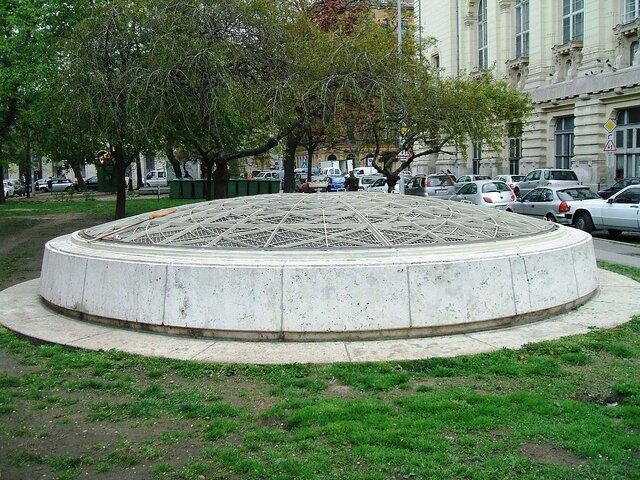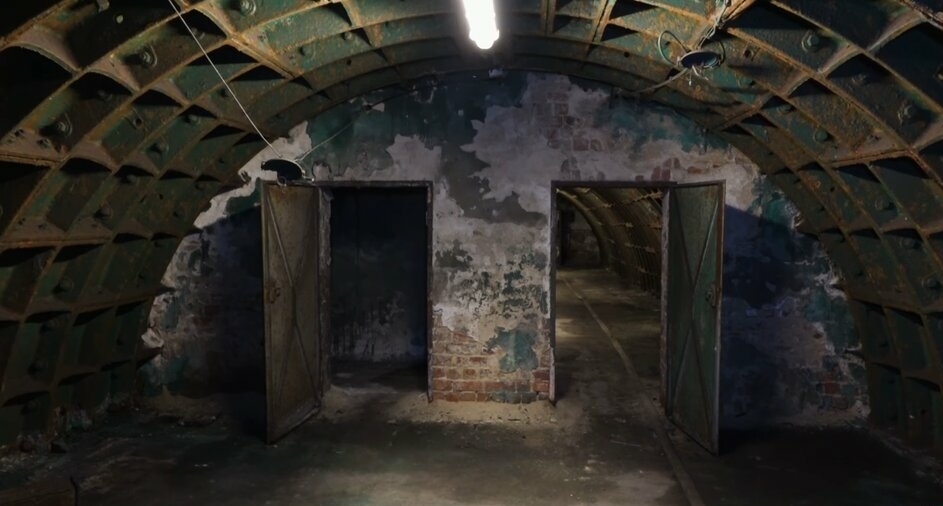Hungary underground: The secret bunker near the Parliament in Budapest

Budapest holds many secrets, especially the underground. During the Cold War, the fear of nuclear annihilation did not avoid Hungary. The communist leadership in the 50s felt that a bunker for the protection of the most important “intellectual workers” was necessary, essentially when it came to high-ranking party members. Despite the huge effort, however, it was never completely finished and nowadays it is almost in ruins.
Located roughly between Szabadság Square and Kossuth Square about 50 metres deep in the ground lies the so-called “Rákosi-bunker.” It is also referred to as the “F4 object”, which directly connects to the M2 metro line. The bunker itself is currently under the management of the BKV and unfortunately, it is off-limits to the public. This is mostly because of its connection to the metro, but also because it is in a quite bad shape.
History of the F-4 object
The bunker’s building process started on the 1st of May 1952. It was built parallelly with the M2 metro line and it roughly used the same materials. It was a secret project so until the late 80s it was not known to the public. The party secretary general at the time was Mátyás Rákosi, who personally ordered the construction of the building. The “F” in the name only means “föld alatti”, which means underground in Hungarian.
Originally, the building was meant for party members, hence the location of the entrance, which is in the former headquarters of the Hungarian Worker’s Party. Later it was changed to be a public shelter for the workers of the Ministry of Heavy Industries. As the workers would have accessed it from street level it was necessary to build a steel staircase leading down to the facility. This is the most noticeable part of the facility. The staircase is part of the air vent in the middle of Szabadság Square.

The facility was officially completed in 1962 or 1963. By 1966, it had a connection to the M2 metro line which was finalised in 1973, according to Varosikurir.hu. The total cost of the construction in today’s exchange rate would be around HUF 6-8 billion (EUR 150-200 billion). Later on, there were plans to repurpose it, but none of these plans were realised.
Most of the valid information we know comes from Balázs Szabó who wrote an entire book on the nuclear shelter. Furthermore, he also shared many pictures of the bunker on Epiteszforum.hu.
The Facility
The construction plans changed a lot over time. As the facility does not serve any use, we can only speculate what kind of protection it would have been able to provide. The building has three entrances: one in the old headquarters which is inaccessible today, the air vent on Szabadság Square and the M2 metro line. Although it is quite close to the Parliament it has no direct connection to it, only through the M2 metro line.

The 3,500 m² facility is located 16 stories deep in the ground. The shelter could have accommodated 2,200 people, but it was only meant for 250 people. At the start, six of these people would have had private compartments. The facility was planned to be equipped with showers, toilets, a meeting room, a canteen, a kitchen, an infirmary and an outside connection through phone and radio. Electricity production would have been solved with diesel generators and for 48 hours oxygen generation should have been provided.
Due to financial constraints, many of the original plans were never realised. Nowadays, it stands empty despite the many plans for its use. Blikk.hu and Szeretlekmagyarorszag.hu both made videos in the bunker. Check them out if you wonder what the facility looks like in reality.
Source: Varosikurir.hu, Epiteszforum.hu, Blikk.hu, Szeretlekmagyarorszag.hu






“History does not belong to us- but we Belong to it.” – quote of Hans-Georg Gadamer.
You have to SERIOUSLY wonder – ask the QUESTION – what is GOING on in Hungary.
Reverting back to 1956 – just agonises me going back to 1945 on – have we “lost” the plot, thinking, acting and behaving – as a Government – as a Country – in similarities to those “DARKENED” years or period in time.
Believe – Hans-Georg Gadamer – wouldn’t disagree with this advice to Hungary ;
“When the Yoke is Broken,
the Burden is Removed.”
NEVER forget Hungary April 2022 – you re-elected your YOKE.
SERIOUSLY – isn’t it time – you Removed your Burden.